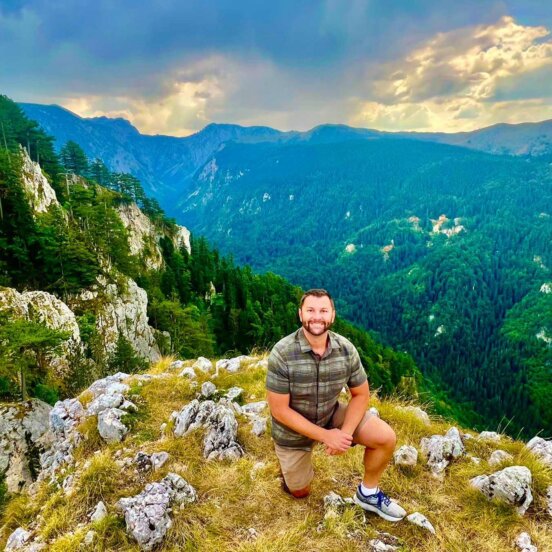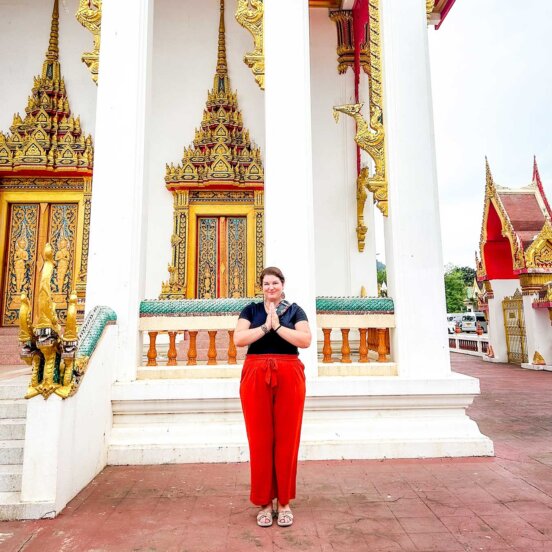Why Stand-Up Paddleboarding is the Ultimate Travel Workout
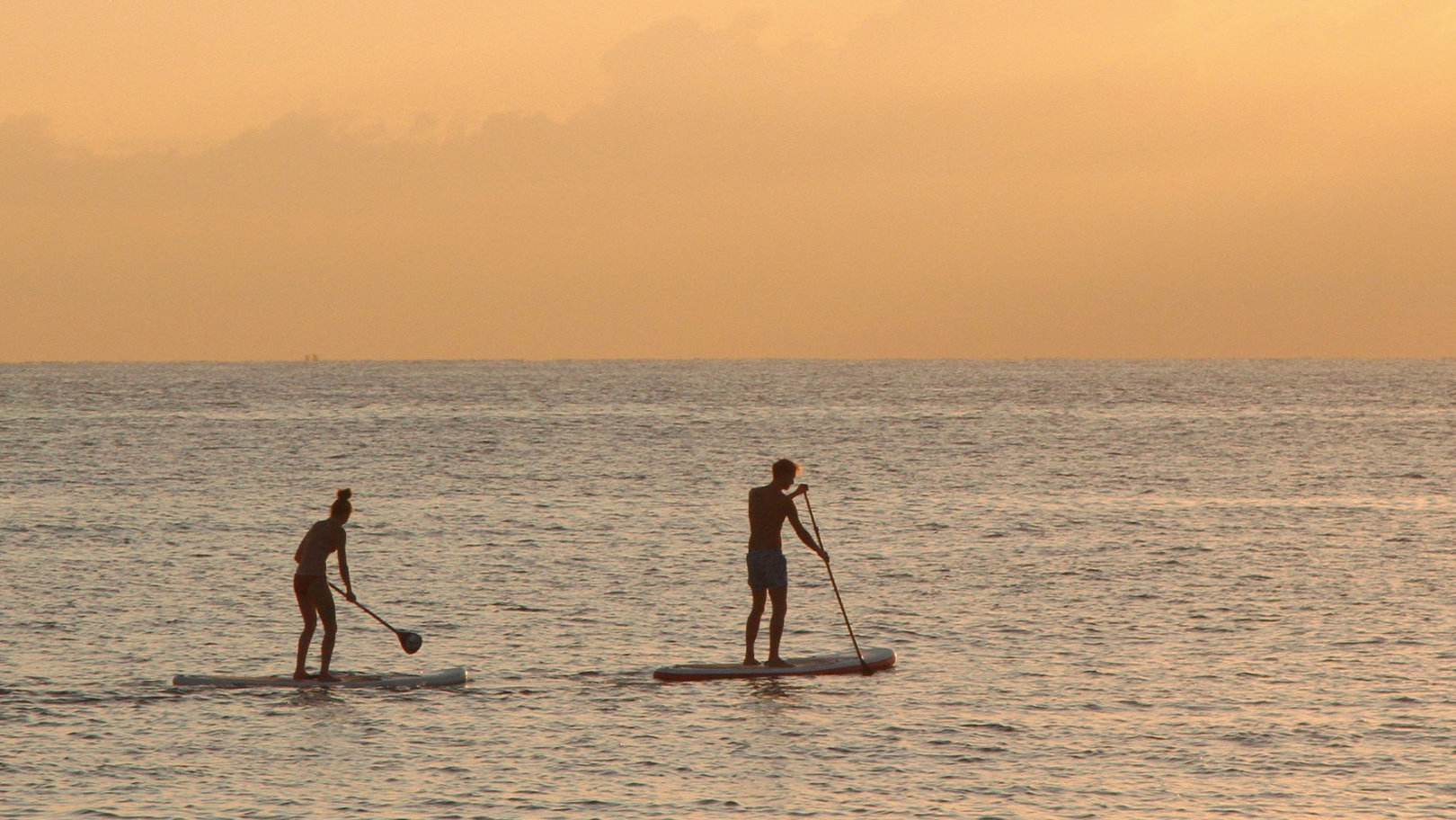
Planes, trains and automobiles are one thing, but stand-up paddleboarding (SUP) offers a different perspective on the world. With low environmental impact, taking to your board is a brilliant way of slowing things down and really seeing a place – wherever you happen to be on an adventure. It also provides a double whammy of strength and cardio training in enjoyable form. Here’s our guide to paddleboarding, its perks and where to do it.
What is paddleboarding?
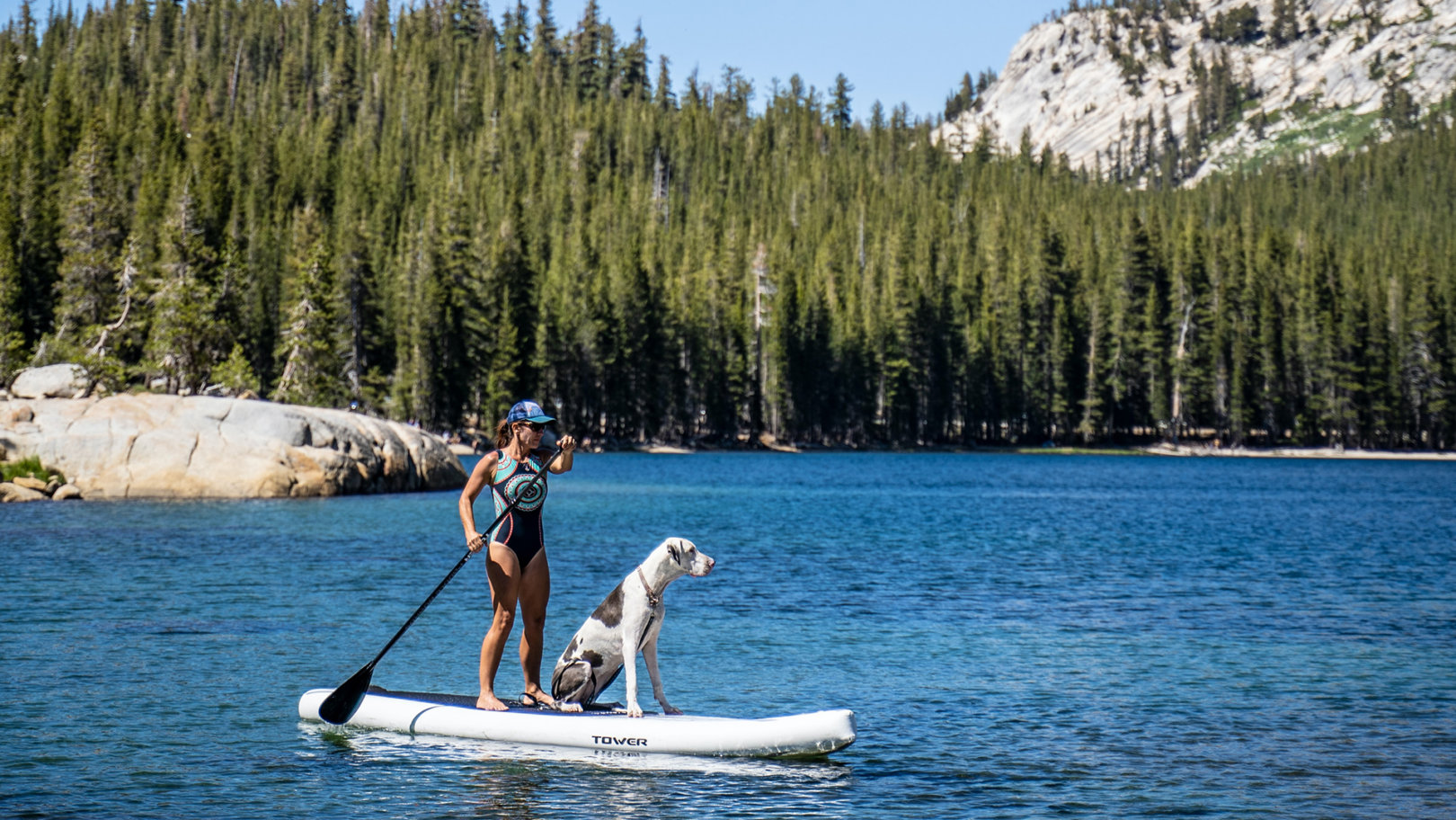
Stand-up paddleboarding is a watersport that’s become popular in the past few years – especially during and after the pandemic, as it proved the ultimate outdoor activity that you could pick up solo and do any time. People use a paddle to propel themselves forward while standing (or sometimes kneeling) on a paddleboard. “It basically comes down to standing on the middle of a board with your feet shoulder-width apart and propelling yourself through the water with a long oar,” SUP fan, Nicky Collins, tells The Guardian.
Is paddleboarding a good workout?
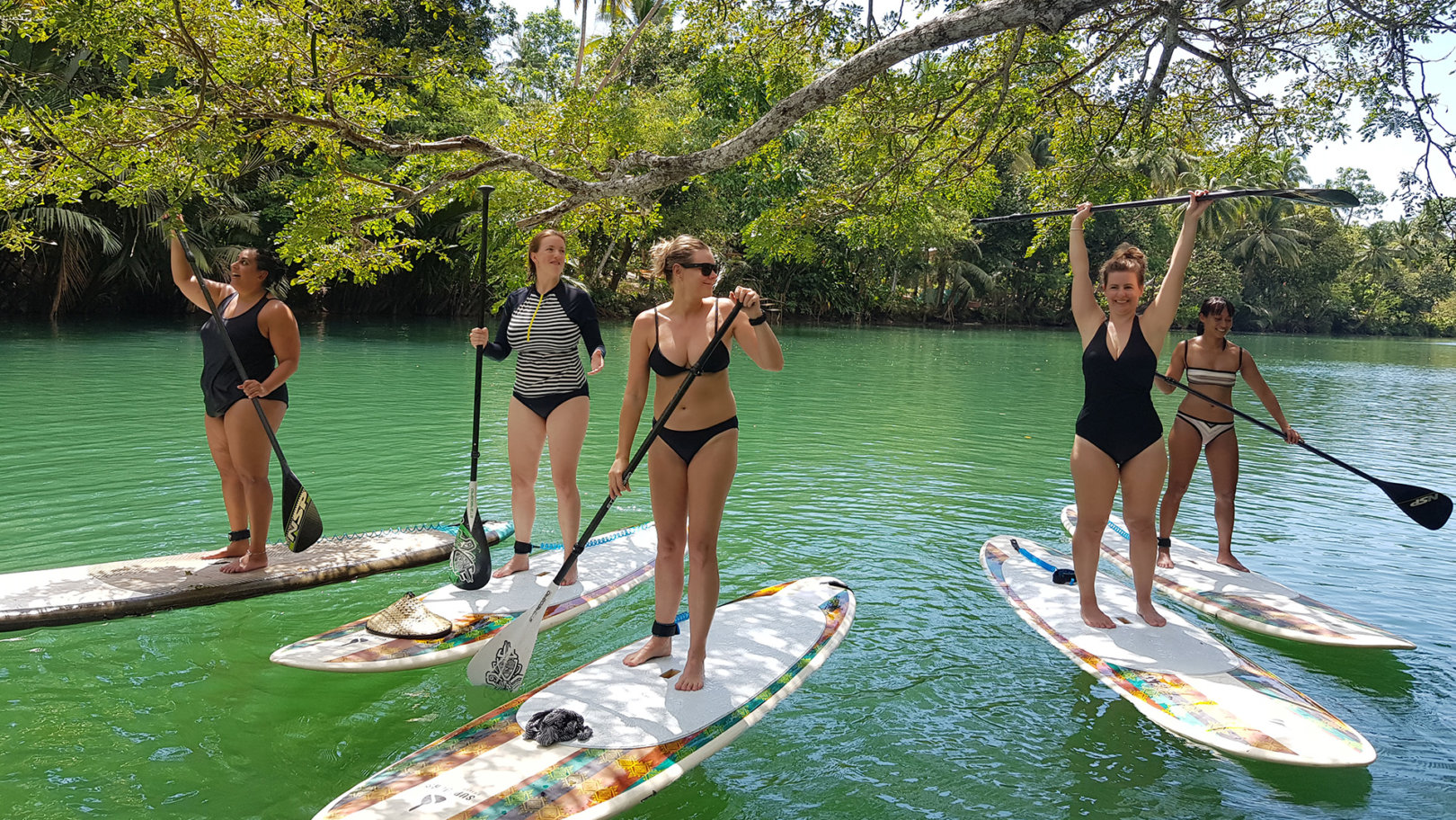
Yes, it’s an excellent workout. Few activities provide such an extensive range, from upper body training to leg work and core strength building. At the same time, it’s also fairly low-intensity and just a fun thing to do. Here’s why you should skip the gym and make a beeline for your nearest lake instead (or better still, travel the world to do so):
It's fairly simple
Much of the appeal of stand-up paddleboarding lies in its tempting simplicity. It doesn’t matter as much what your body size, shape or level of fitness is — it’s considered easy and accessible to most people. SUP athlete, Lizzie Carr, tried paddleboarding for the first time just two years before she made history as the only person to navigate the entire length of England via its canal networks. “I’m on a mission to show that anyone can have an adventure,” she said at the time. “What I’m doing is something anyone can do.”
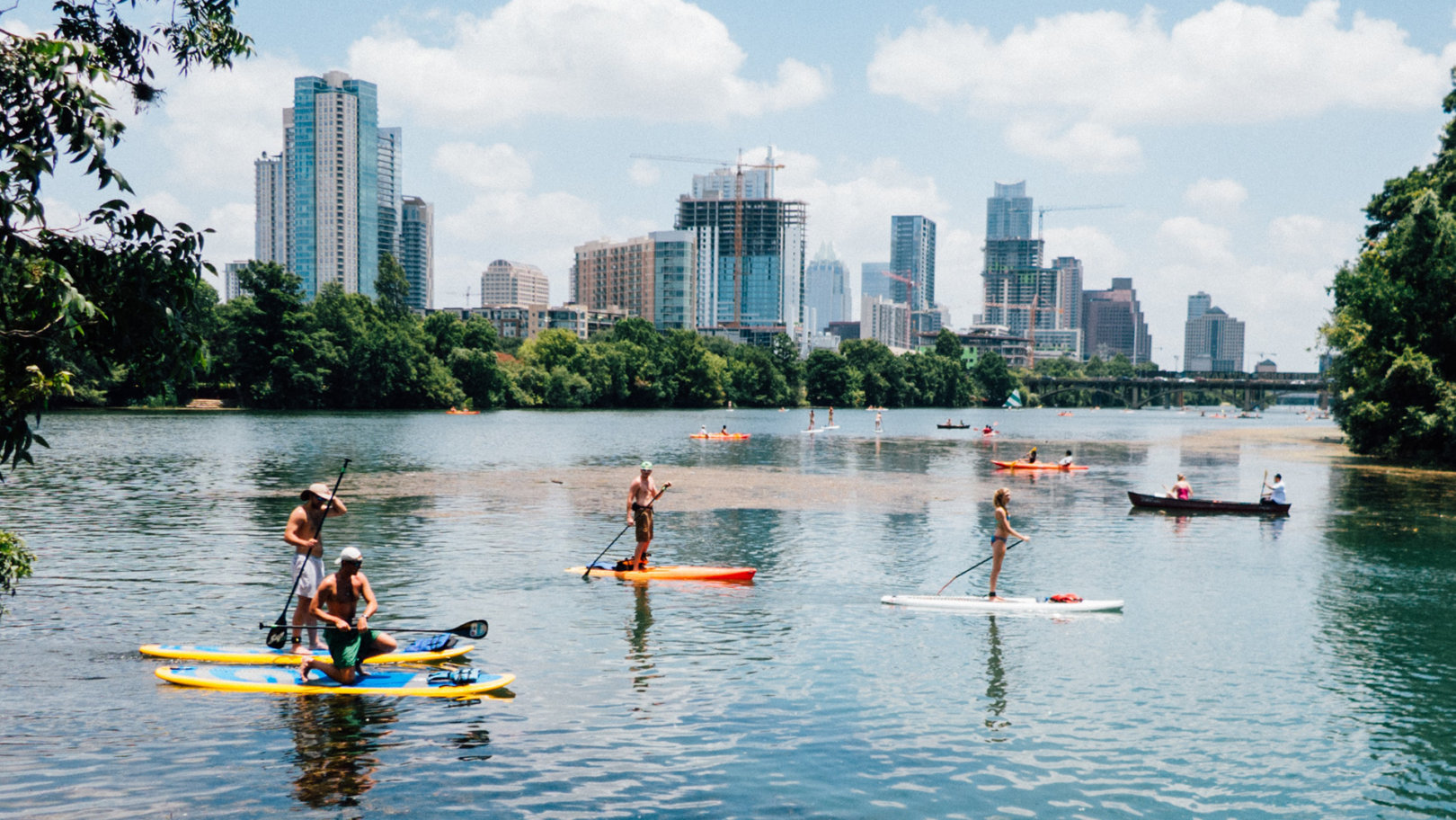
It's great for your core
Want to get your core up and running without the pain of plank position? Let stand-up paddleboarding be your guide. This is a brilliant way to put your core through its paces, since your abdominal muscles will be constantly working to help you keep your balance. It’s a gentle and fun core exercise, yet you’ll definitely feel the reward in action. “The rockier the water, the harder you have to work to stay upright and balanced, which is great for your core,” says Nicky.
It builds all-body strength
Beyond the core alone, SUP is also a great all-round body workout. It’s an exercise in strength and endurance that requires almost every element of the body to cooperate. When you paddle through the water, your quadriceps, shoulders, arms and knees work together to propel you forward. Your leg muscles also up their game to help the core in keeping your balance. And yet, you don’t really feel the ache in the same way as you might in the gym, as you’re distracted by the motion of gliding across water, along the Loboc River in the Philippines, say. It’s the perfect cross-trainer, providing both aerobic and strength-based training.
What are other benefits of SUP?
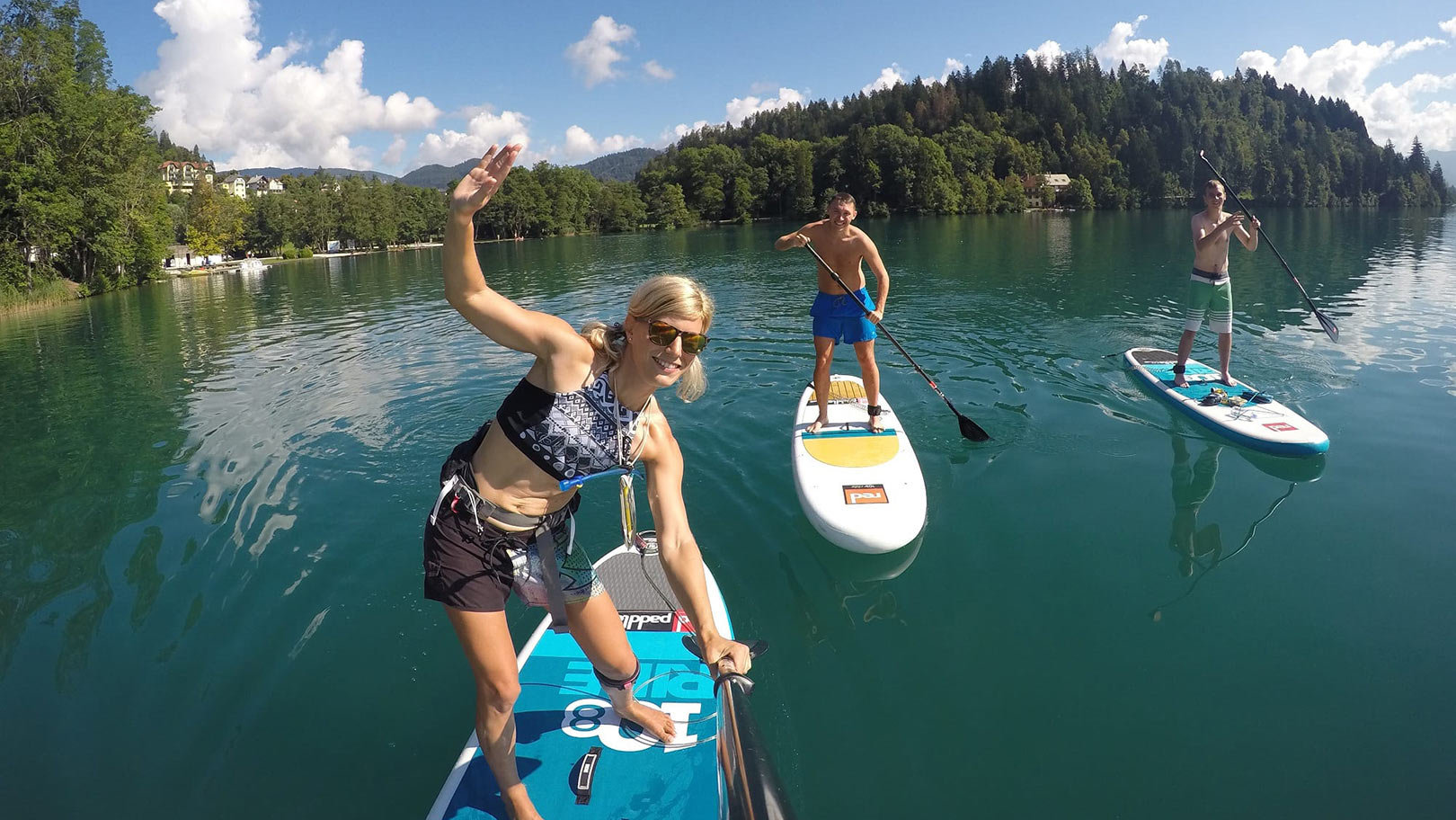
Stand-up paddleboarding isn’t just about smashing calories or building core strength, though — it’s also a great workout because of its holistic benefits. SUP has a distinct mind-calming quality that comes from the ability to dial down and see the world in a slower, more detailed way. Wherever you happen to be, you can use stand-up paddleboarding to immerse yourself in the natural landscape and appreciate your setting from a fresh perspective.
It’s a rich experience that will bring you face-to-face with the meditative delights of Mother Nature. “Nature has an overwhelming power to bring calm and clarity,” says Lizzie. Her own canal adventure, she says, was a way of treasuring “a presence of calm and tranquillity in often dense, urban places”.
Whether you’re paddleboarding with penguins in South Africa or trying star-lit SUPing in Croatia, it paves the way for a more serene vantage point and taps into the delights of slow travel.
It comes with the perfect cool down, too
For us, the best kind of workouts end with some chill time – and that’s certainly the case with stand-up paddleboarding. Whenever you feel like you’ve paddled enough – yes, even on Costa Rica‘s Pacific Coast, this eventually happens (you’re only human) – you can simply stretch out on your board and soak in the rays. Have a gentle snooze, splash some water over you to cool down; or start an impromptu water fight with your SUP neighbor. Since you can paddleboard anywhere in the world – and even in the same place, wind and water conditions will vary – this is a workout where no two sessions are the same. So, kick back, relax and make the most of this supremely soothing sport.
What to wear paddleboarding
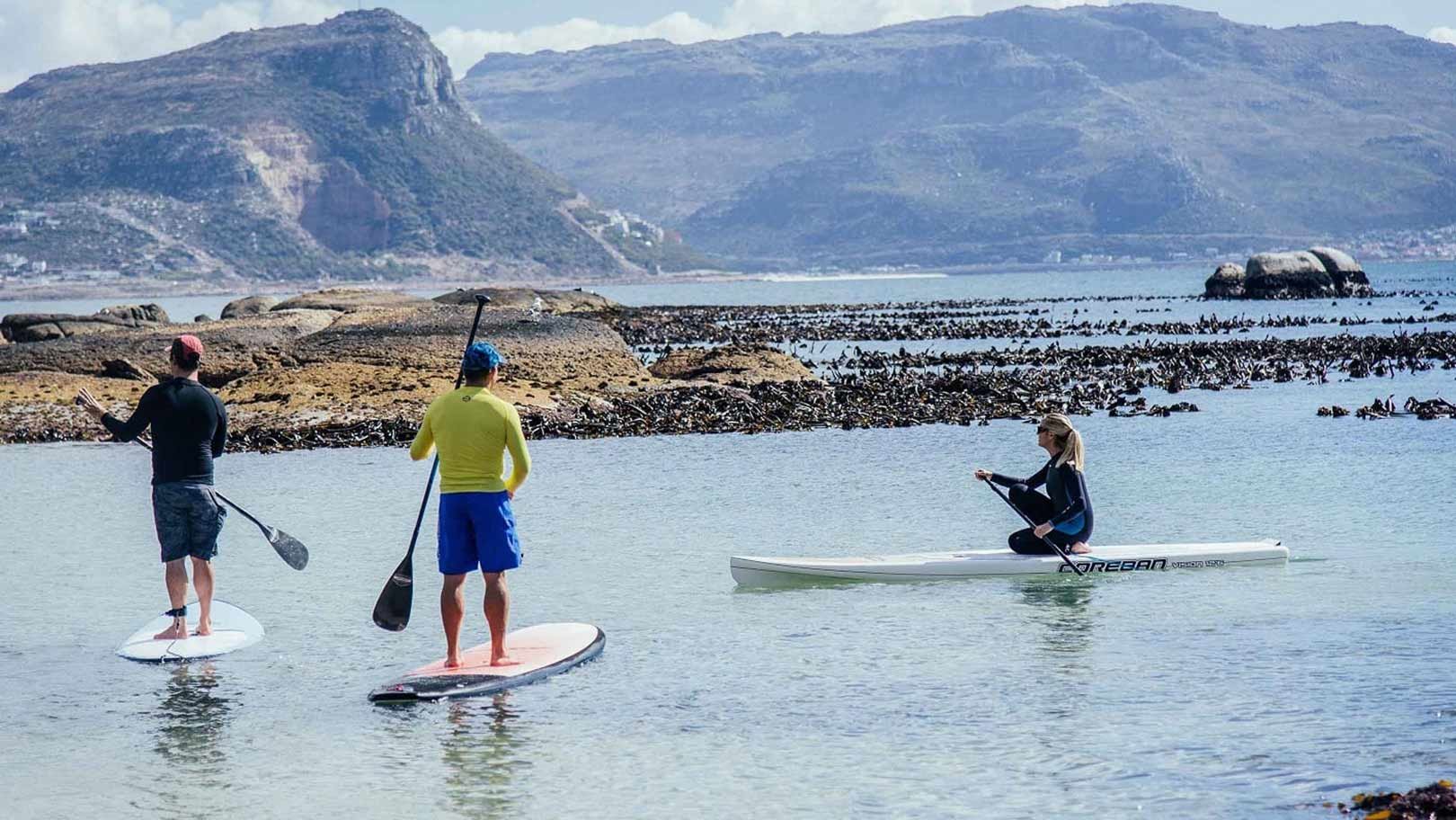
If paddleboarding is just part of your travels — and in a warm destination — you don’t necessarily have to invest in a wetsuit (and take up luggage space). Wearing a swimsuit works just fine, as does going barefoot. For somewhere a little chillier – like a crisp lake in Finnish Lapland or the wilds of Iceland – consider waterproof trousers, a waterproof top and some thermal base layers, plus some light neoprene shoes. Being active will keep you warm, so having a waterproof bag to delayer is always useful. And once you’re steady enough on your feet to take some pics, remember to bring a dry bag on board for your camera, phone, and post-SUP beers…
Join Flash Pack today to celebrate your 30s and 40s with other like-minded travellers.
Got a story or adventure that could inspire a solo traveler like you? Tag @flashpack on social or email [email protected] to be featured.
Images: Flash Pack & Unsplash






